Artistry and alchemy: Lasvit transforms glass into a three-dimensional canvas at Milan Design Week
Take a peek inside the making of Czech design brand Lasvit's Milan Design Week 2024 installation (on view at Palazzo Isimbardi from 16-21 April)
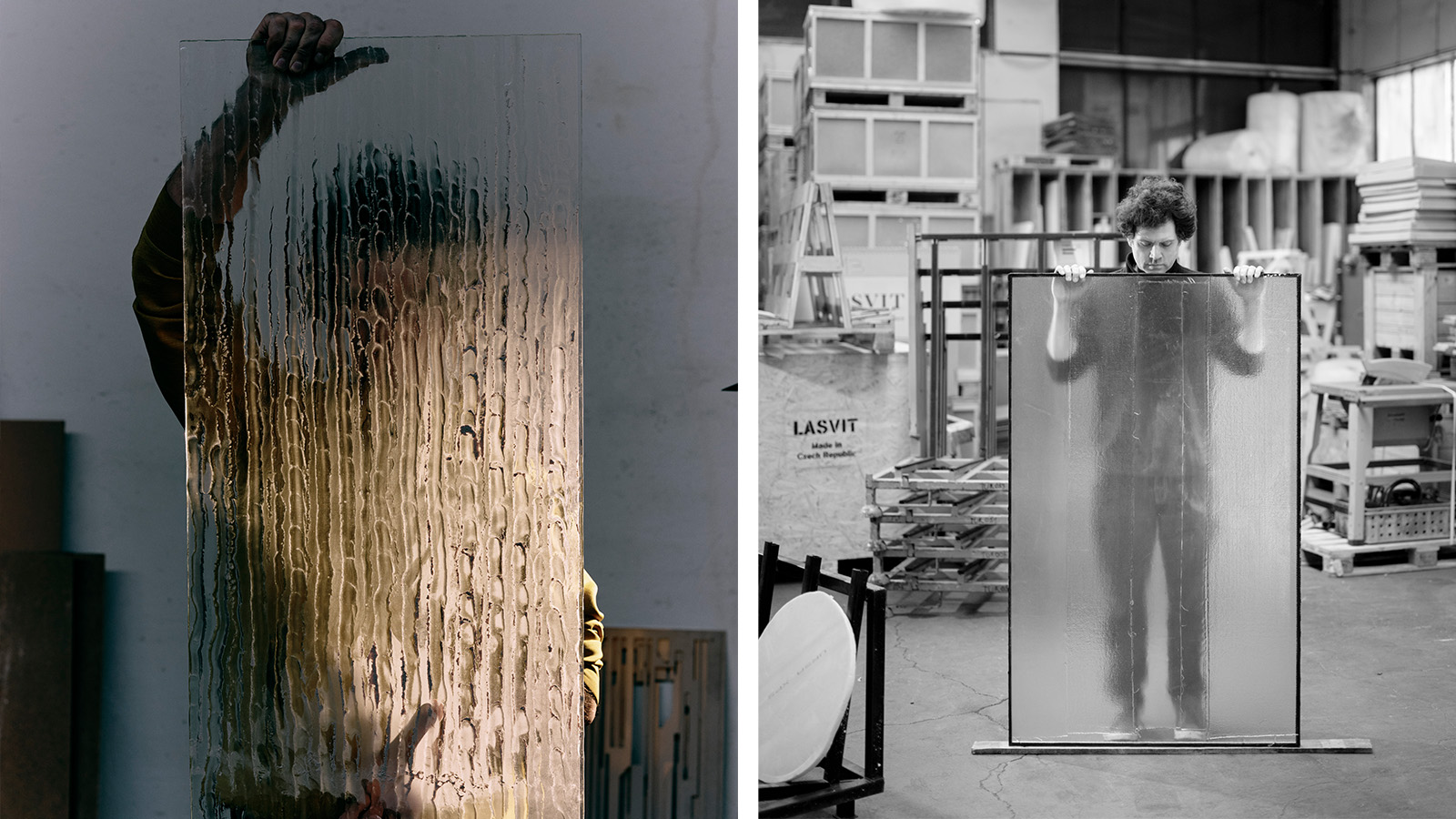
As part of its ongoing mission to redefine and reinvent glass, Czech design brand Lasvit takes over the courtyard of Palazzo Isimbardi during Milan Design Week 2024 with a striking and majestic installation. Featuring 10 large-scale panels of fused glass, some measuring almost five metres in height and placed in Corten steel frames, others measuring three metres and free-standing, ‘Porta’ (or Gate), as the installation is called, will present the handmade glass specialist’s latest experiments and innovations in fused glass for architectural and outdoor settings.
'It’s something between artistry, engineering and alchemy,’ says Lasvit Art Director, Maxim Velčovský, who designed the installation, as he walks around the factory where they have been crafting the unique pieces in the run-up to Salone del Mobile.
Lasvit presents ' Porta' at Milan Design Week
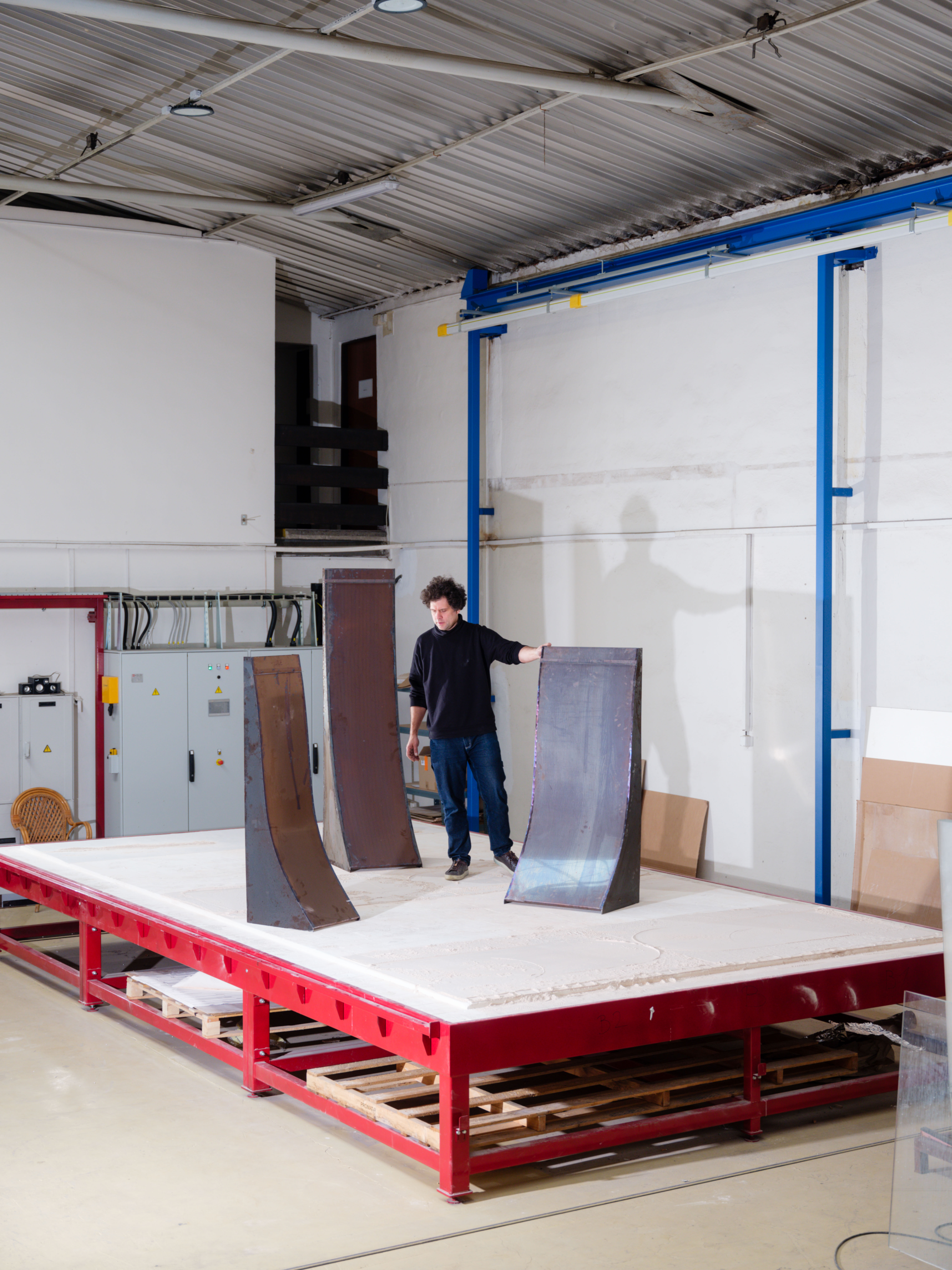
Located just minutes from the company’s multi-building HQ in the northern Bohemian town of Nový Bor, the factory is filled with a panoply of glass in different sizes, on which Velčovský and the workshop artisans have tested different and sometimes pleasingly zany designs over a period of months. Anything can and has been used - from rollers, brushes and ceramic beads to rope, bubble wrap or even fingers - to create the patterns and motifs on the thick layers of a so-called release agent that looks like sand.
'It's a special powder,' explains Velčovský, 'that resists the heat and that you can wash out afterwards.' The flat sheet of glass - or float glass - is laid on top of the ‘imprinted sand’ and then heated in a custom-made kiln (that also happens to be the largest in Europe) so that it absorbs the designs and indentations below.
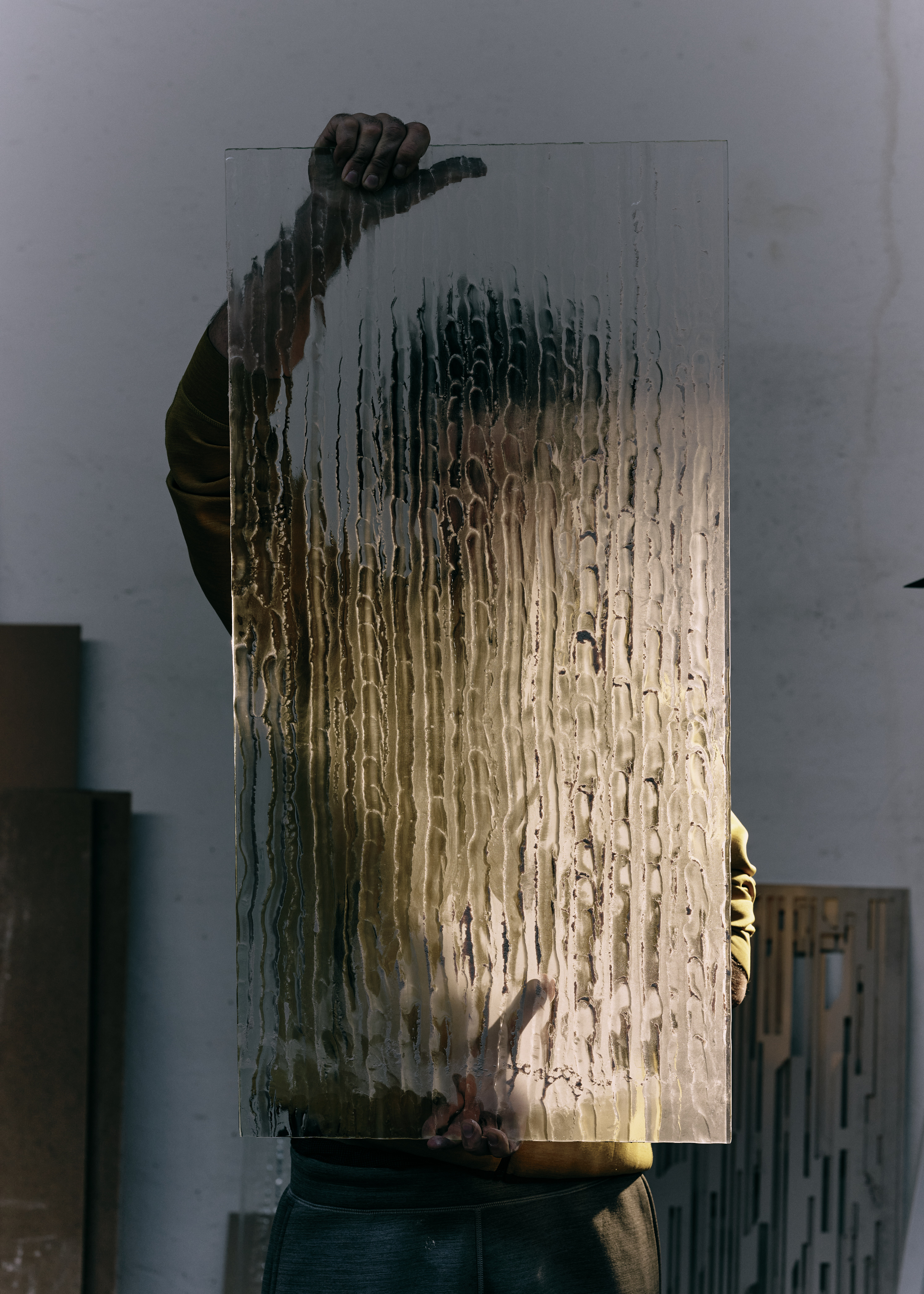
The results are elegant, playful and mysterious in equal measure. Velčovský is partial to two designs in particular, both of which are making their way to Milan as we speak. One is a sort of lunar landscape with craters (achieved by throwing the ‘sand’ so it leaves ‘holes’); the other a medley of all the different tools and utensils used.
'I walked on the sand for part of that one and left a really good imprint of my shoes,' says Velčovský with a grin. The testing process sounds like a lot of fun but it wasn’t without its risks and perils. 'If you do too radical or deep a relief you can’t laminate the glass after,' explains Velcovsky. The real challenge and limit, for now, is making sure the glass is structurally safe in these sizes and getting the necessary certification. 'We are working with scientists and technologists on new materials that would make the glass even safer but this will take another year or so.' The idea is that by then they will be able to do even the bigger sizes without a frame.
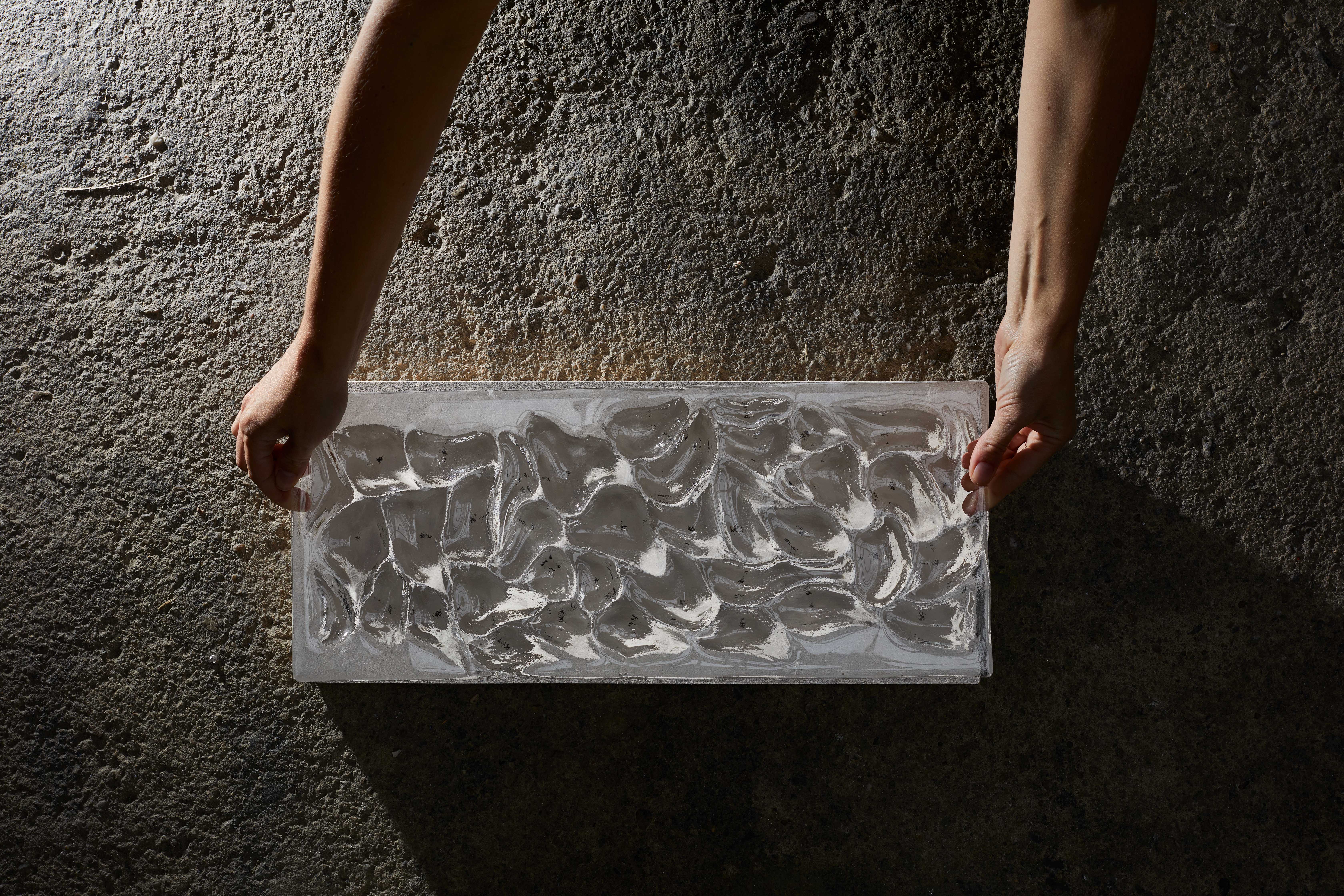
The beauty of these fused glass panels is that once laminated and 'made safe', they can be used on the facades of buildings. And unlike industrially- or mass-produced structured glass, where one type of roller is used and a wallpaper-style design is made with a pattern that repeats itself every few metres, these panels are handmade and unique. 'You can of course also repeat a pattern,' says Velčovský, 'but for now we are treating these sheets more like a three-dimensional canvas to show what is possible. It’s like a portfolio of design principles you can work with but there are many more as imagination has no boundaries.'
Receive our daily digest of inspiration, escapism and design stories from around the world direct to your inbox.
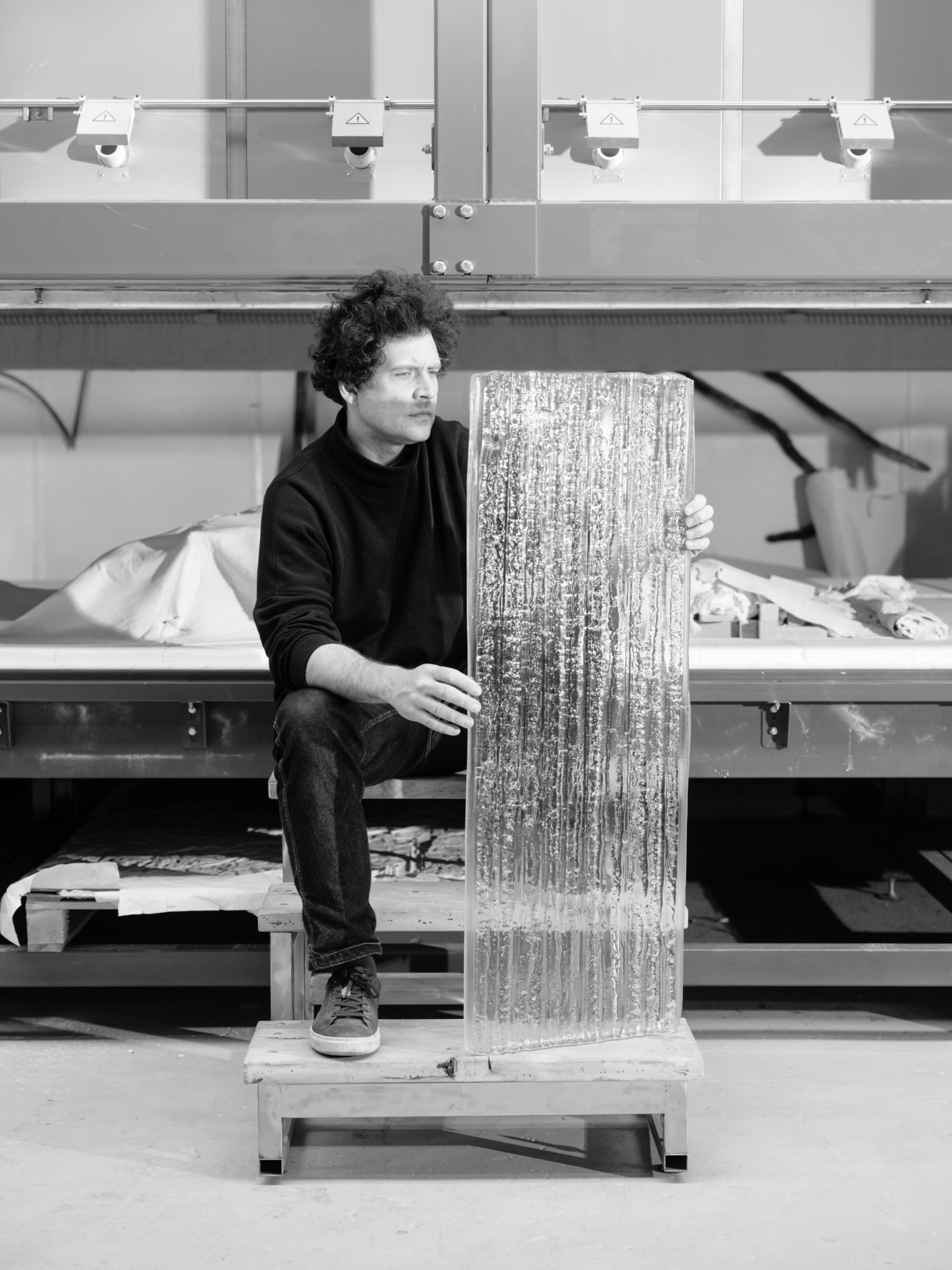
Elsewhere in Palazzo Isimbardi, Lasvit will feature other new products and innovations too. It will show a limited edition gold version of the La Scala lamp from its opulent ‘Neverending Glory’ series to mark the latter’s tenth anniversary, as well as a new light installation made of bent plywood, copper wires and handmade glass created by Lasvit senior designer Maria Culenova. It will also present a new collection called Nebula by Swedish designers Claesson Koivisto Rune. 'We haven’t had any Scandinavian designers work with us until now so we were excited about the more pure approach they might bring to the material,' says Velčovský.

Made of borosilicate or technical glass, the same 'glass you find in a pyrex dish or double walled coffee cup' in order to achieve the perfect ‘thinness’ and detailing, the Nebula pendants and table lamps are finished by hand on the lathe. The otherworldly and constantly changing glow they produce is achieved by the diffusing glass lens at its centre, which is designed to send light upwards towards a metalized glass reflector.
'The biggest challenge with a piece like this is how to combine all the different ideas and create a harmonious whole where all the screws and details are hidden,' says Velčovský. 'Sometimes minimal and clean designs are more complicated than the more ornate ones,' he admits.
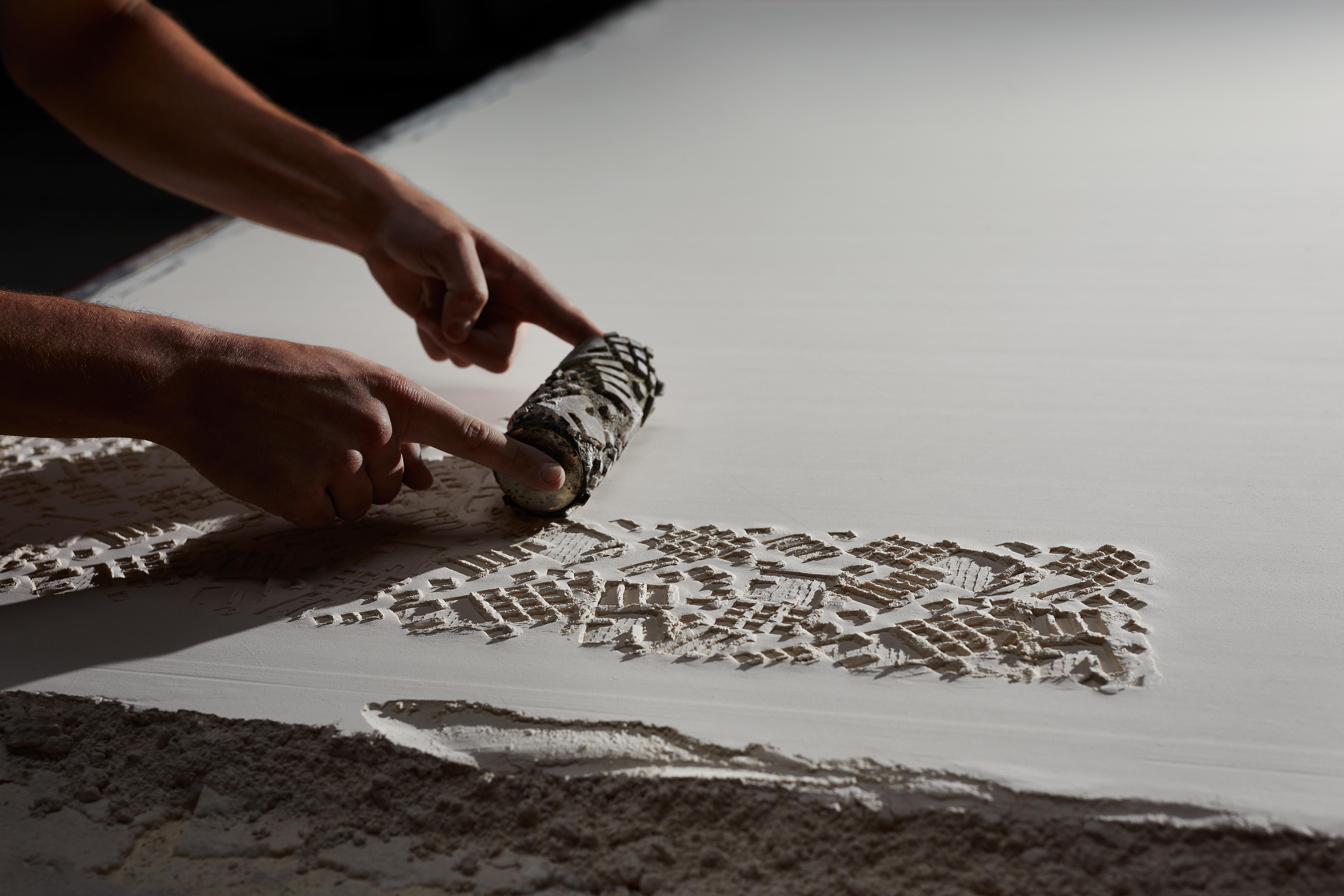
The third and final stop on our whistle stop pre-Milan Lasvit tour is Ajeto glassworks, part of the Lasvit group and a short drive from Nový Bor. 'This is where we have the furnace and glass-blowing, the guys who do the cutting, the mould maker and the guy who mixes the glass;' says Velčovský. 'A lot of the pre-industrial moments of the manufacturing process.'
It’s not possible to have every aspect of glass-making in-house, he continues, which is why Lasvit works with companies around the country. But having this kind of capability to hand means they can adapt and update designs and ideas with greater ease. When a designer or architect comes to them with an idea, 'we will always find a way,' he says. In terms of the fused glass, Velčovský hopes Milan Design Week will be a moment where industry players and designers can see the potential this technology has on a bigger scale. 'We want to partner with the right people to take this technology to the next level.'

'Porta' by Lasvit is on view during Milan Design Week 2024 at Palazzo Isimbardi, Corso Monforte, 35
Giovanna Dunmall is a freelance journalist based in London and West Wales who writes about architecture, culture, travel and design for international publications including The National, Wallpaper*, Azure, Detail, Damn, Conde Nast Traveller, AD India, Interior Design, Design Anthology and others. She also does editing, translation and copy writing work for architecture practices, design brands and cultural organisations.
-
 How We Host: Interior designer Heide Hendricks shows us how to throw the ultimate farmhouse fête
How We Host: Interior designer Heide Hendricks shows us how to throw the ultimate farmhouse fêteThe designer, one half of the American design firm Hendricks Churchill, delves into the art of entertaining – from pasta to playlists
-
 Arbour House is a north London home that lies low but punches high
Arbour House is a north London home that lies low but punches highArbour House by Andrei Saltykov is a low-lying Crouch End home with a striking roof structure that sets it apart
-
 25 of the best beauty launches of 2025, from transformative skincare to offbeat scents
25 of the best beauty launches of 2025, from transformative skincare to offbeat scentsWallpaper* beauty editor Mary Cleary selects her beauty highlights of the year, spanning skincare, fragrance, hair and body care, make-up and wellness
-
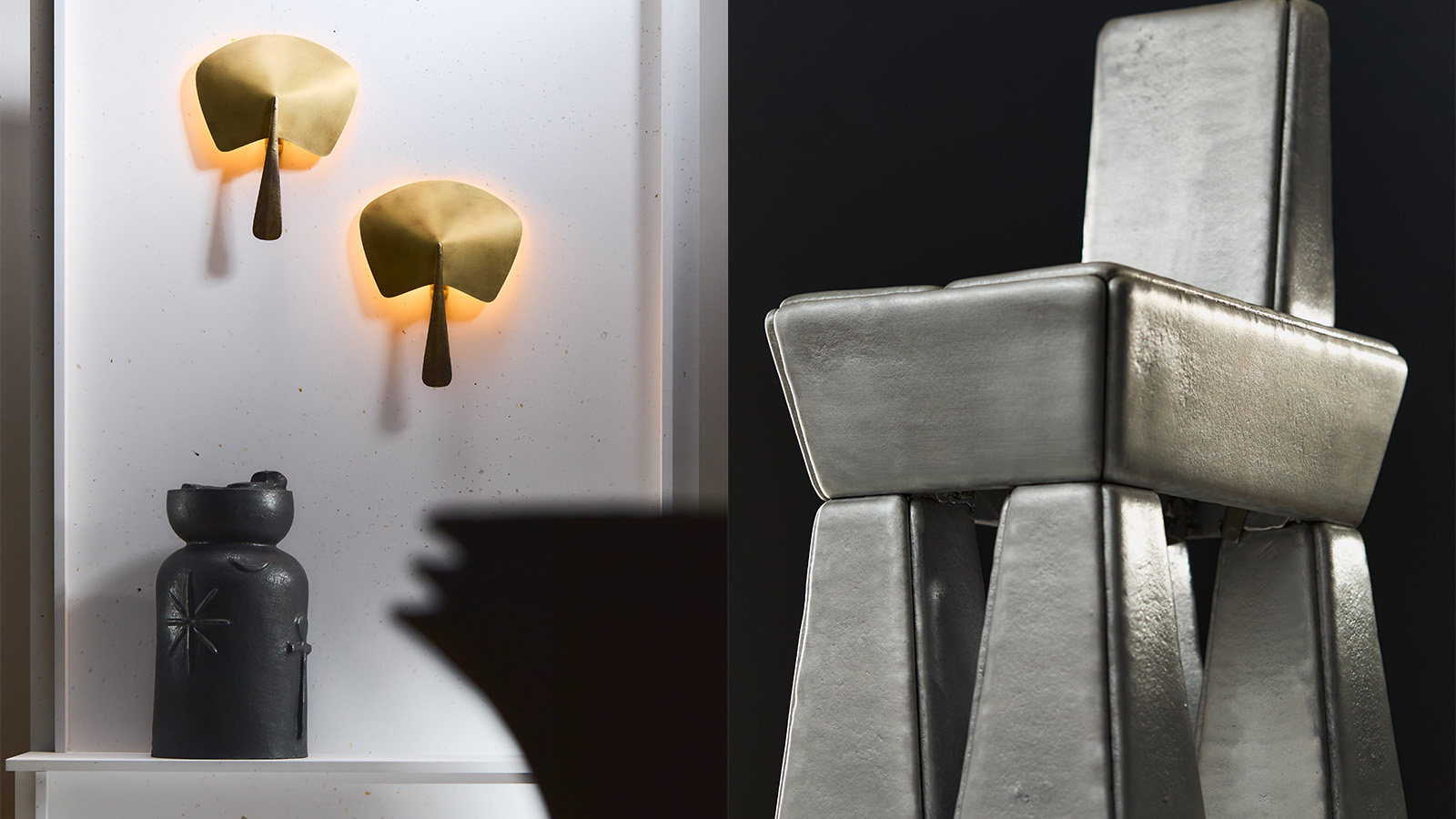 20 emerging designers shine in our ‘Material Alchemists’ film
20 emerging designers shine in our ‘Material Alchemists’ filmWallpaper’s ‘Material Alchemists’ exhibition during Milan Design Week 2025 spotlighted 20 emerging designers with a passion for transforming matter – see it now in our short film
-
 Delve into the Wallpaper* Design Directory 2025, on sale now
Delve into the Wallpaper* Design Directory 2025, on sale nowIn the July issue of Wallpaper*, find a photographic love letter to Milan Design Week, plus the best new furniture, lighting, kitchens, bathrooms and more
-
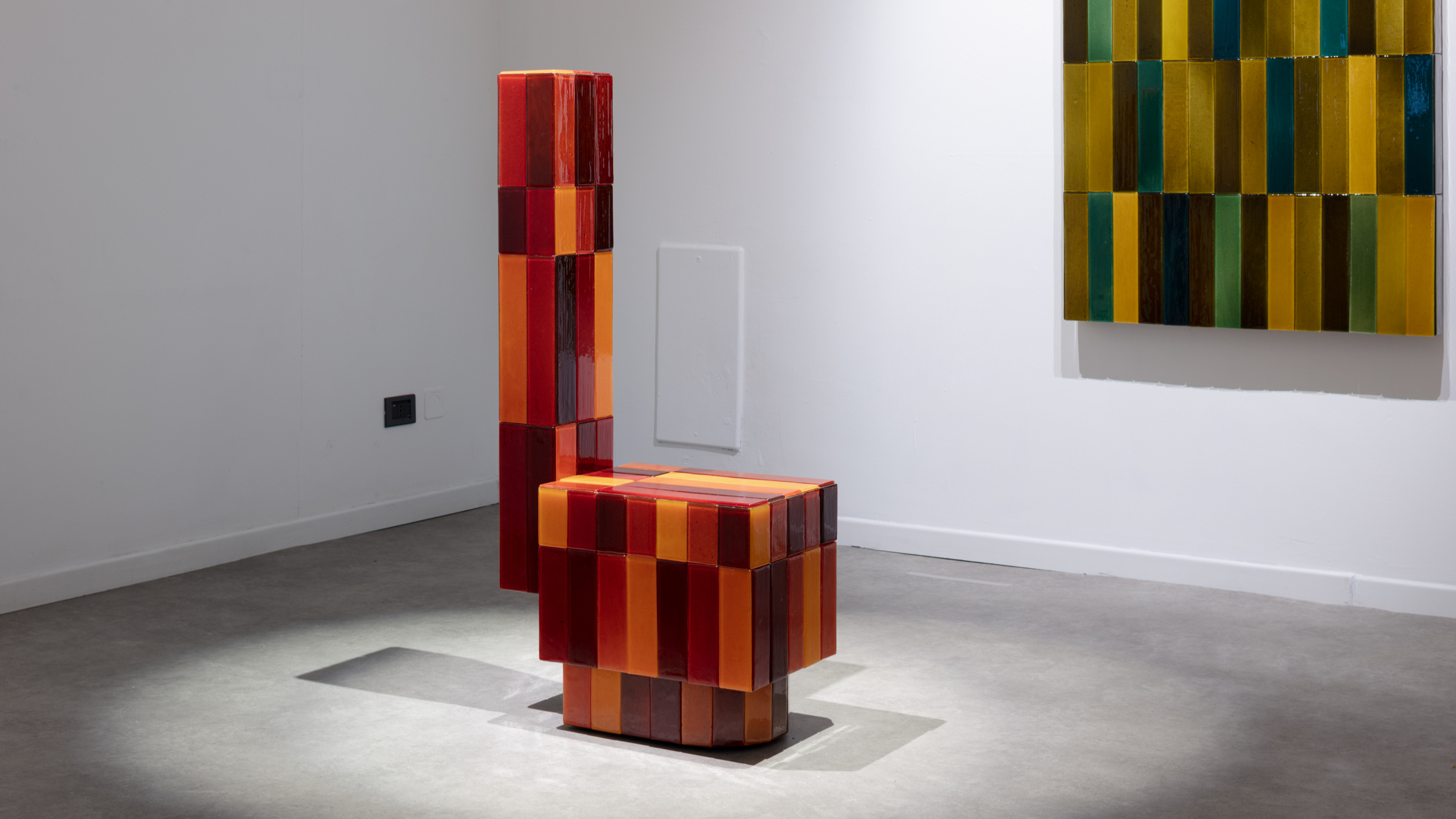 Tokyo design studio We+ transforms microalgae into colours
Tokyo design studio We+ transforms microalgae into coloursCould microalgae be the sustainable pigment of the future? A Japanese research project investigates
-
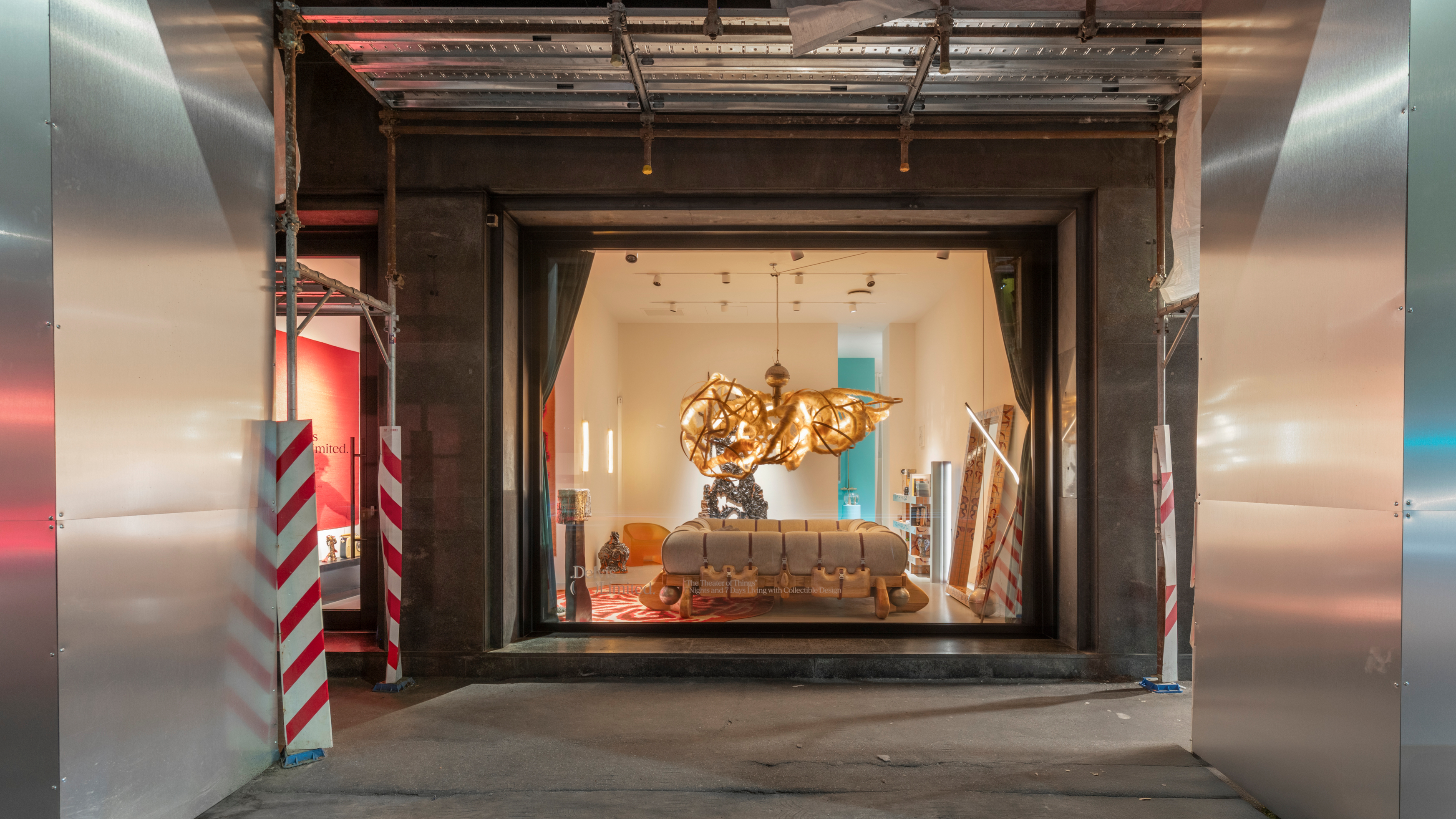 Delvis (Un)Limited turns a Brera shopfront into a live-in design installation
Delvis (Un)Limited turns a Brera shopfront into a live-in design installationWhat happens when collectible design becomes part of a live performance? The Theatre of Things, curated by Joseph Grima and Valentina Ciuffi, invited designers to live with their work – and let the public look in
-
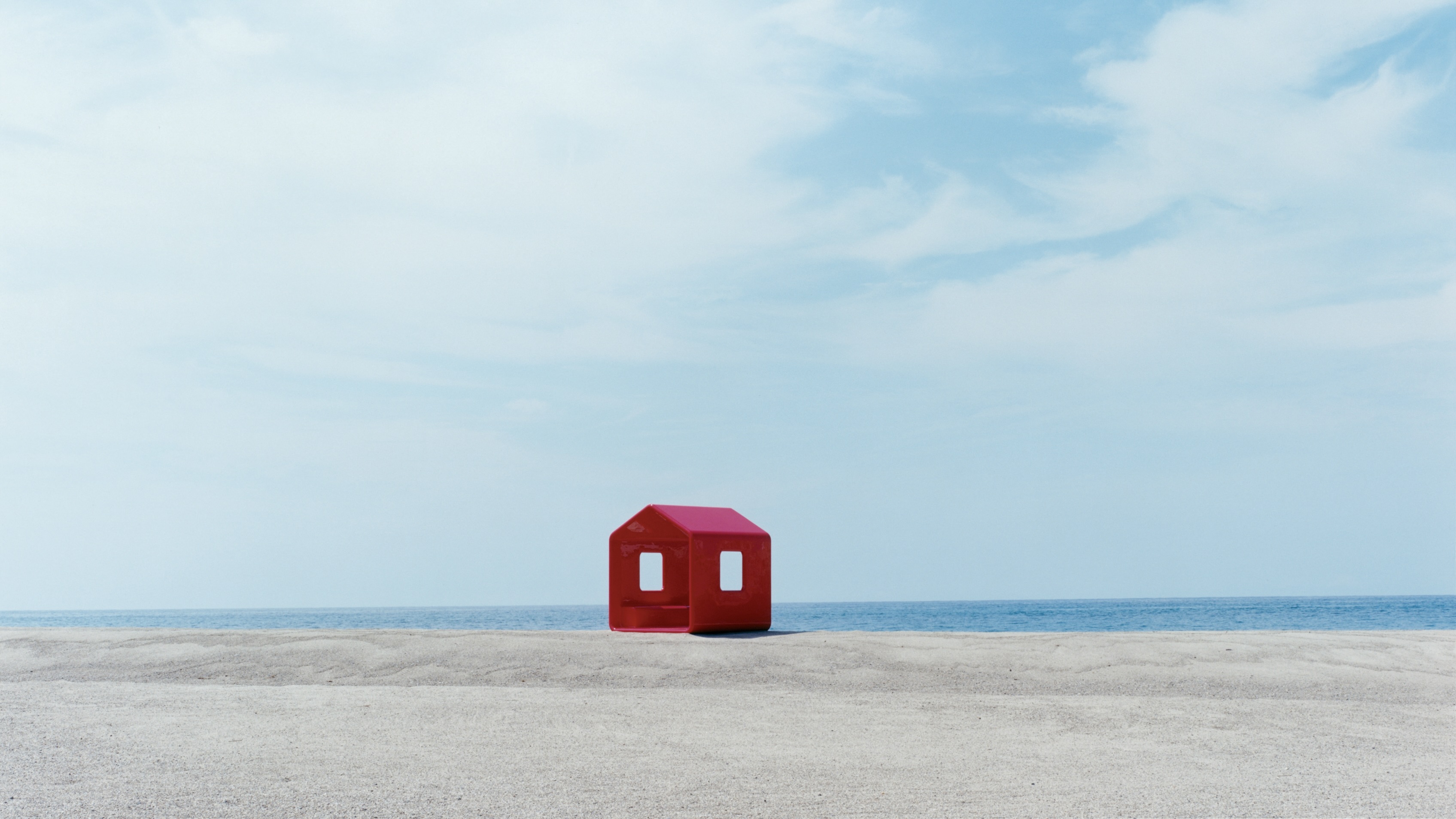 Naoto Fukasawa sparks children’s imaginations with play sculptures
Naoto Fukasawa sparks children’s imaginations with play sculpturesThe Japanese designer creates an intuitive series of bold play sculptures, designed to spark children’s desire to play without thinking
-
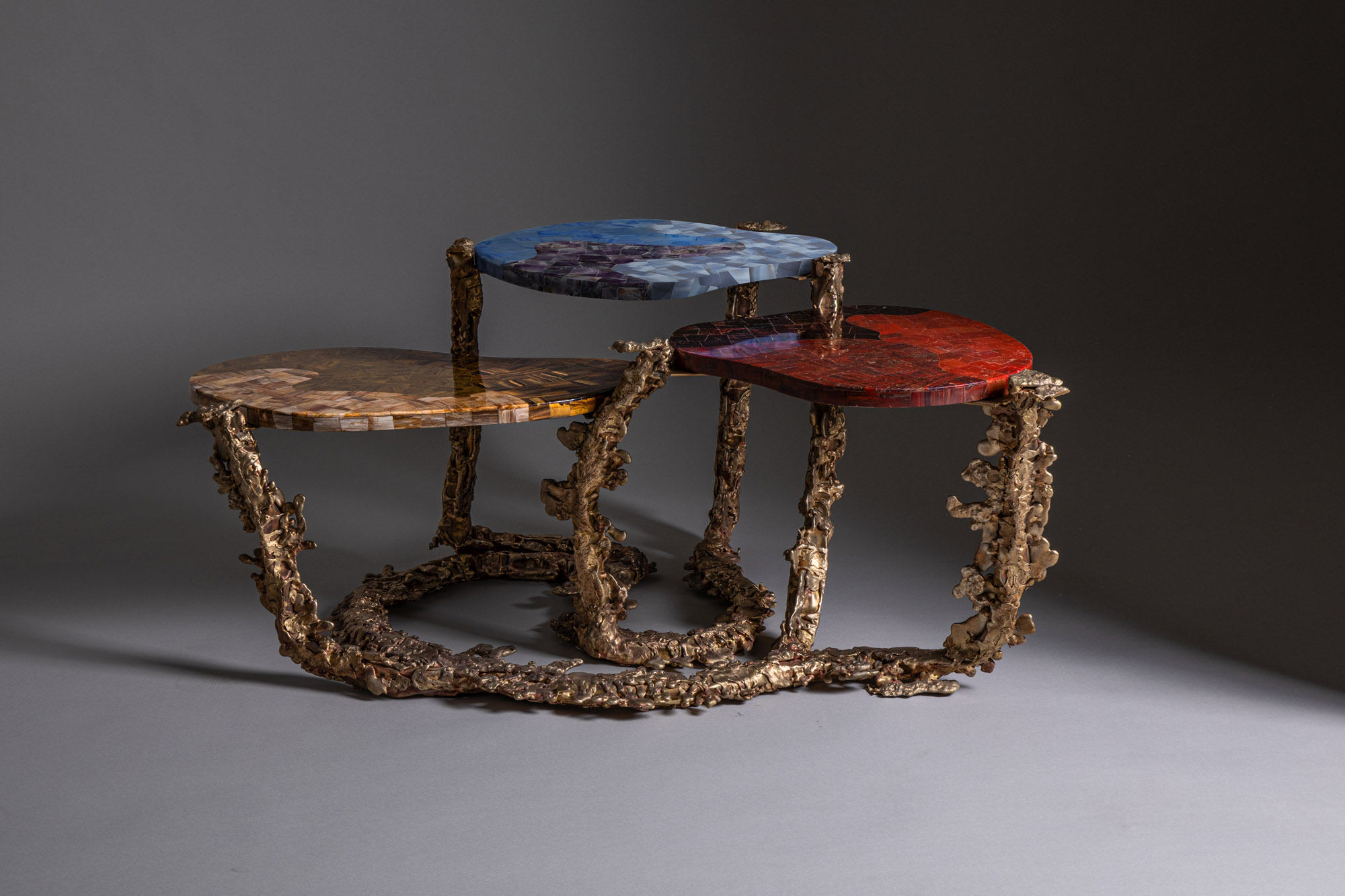 Inside the Shakti Design Residency, taking Indian craftsmanship to Alcova 2025
Inside the Shakti Design Residency, taking Indian craftsmanship to Alcova 2025The new initiative pairs emerging talents with some of India’s most prestigious ateliers, resulting in intricately crafted designs, as seen at Alcova 2025 in Milan
-
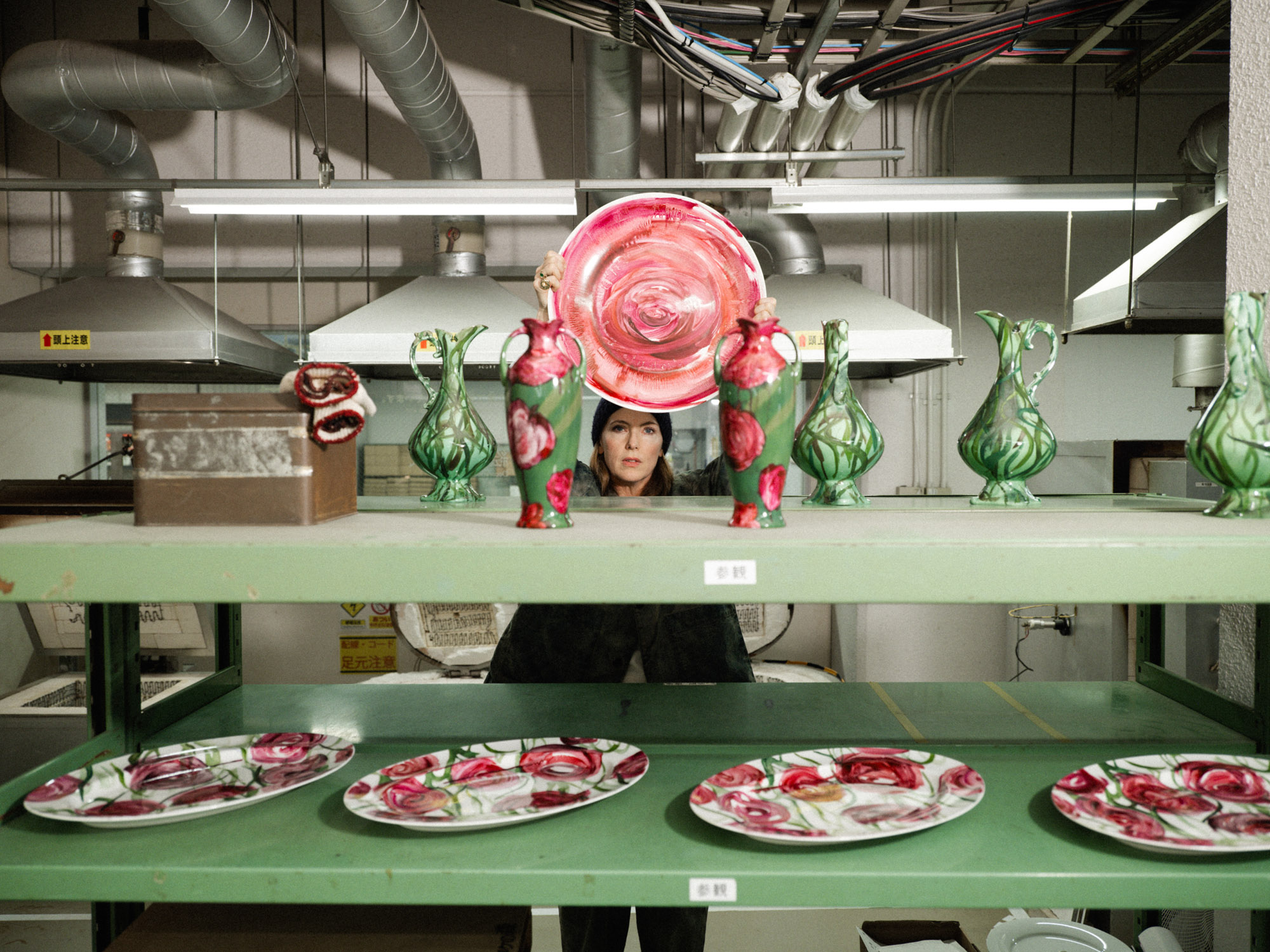 Faye Toogood comes up roses at Milan Design Week 2025
Faye Toogood comes up roses at Milan Design Week 2025Japanese ceramics specialist Noritake’s design collection blossoms with a bold floral series by Faye Toogood
-
 6:AM create a spellbinding Murano glass showcase in Milan’s abandoned public shower stalls
6:AM create a spellbinding Murano glass showcase in Milan’s abandoned public shower stallsWith its first solo exhibition, ‘Two-Fold Silence’, 6:AM unveils an enchanting Murano glass installation beneath Piscina Cozzi